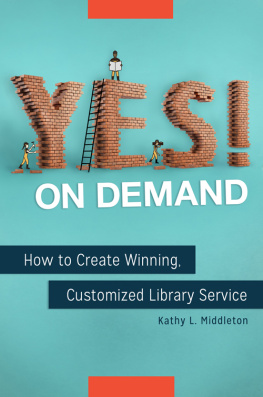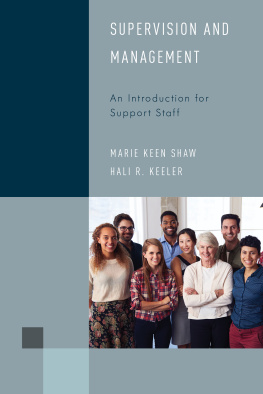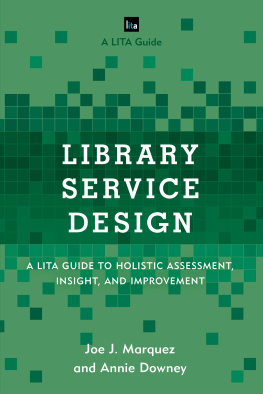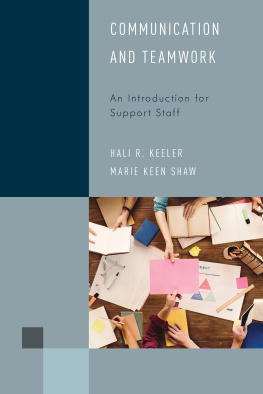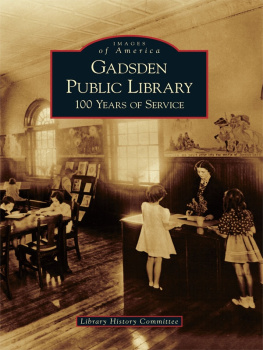Yes! on Demand
YES! ON DEMAND
How to Create Winning,
Customized Library Service
Kathy L. Middleton
Foreword by Rivkah Sass

Copyright 2017 by Kathy L. Middleton
All rights reserved. No part of this publication may be reproduced, stored in a retrieval system, or transmitted, in any form or by any means, electronic, mechanical, photocopying, recording, or otherwise, except for the inclusion of brief quotations in a review, without prior permission in writing from the publisher.
Yes! on Demand: How to Create Winning, Customized Library Service
Library of Congress Cataloging in Publication Control Number: 2016027467
ISBN: 978-1-4408-4853-7
EISBN: 978-1-4408-4854-4
21 20 19 18 17 1 2 3 4 5
This book is also available as an eBook.
Libraries Unlimited
An Imprint of ABC-CLIO, LLC
ABC-CLIO, LLC
130 Cremona Drive, P.O. Box 1911
Santa Barbara, California 93116-1911
www.abc-clio.com
This book is printed on acid-free paper 
Manufactured in the United States of America
Dedicated to Library Stars Everywhere
Contents
Foreword
Sometimes I worry that in our quest to find the next new library thing, we are so busy debating whatever our current library buzzwords arefuture, relevancy, outcomes, library serviceand so busy competing with one another to be the first to offer the latest new thing in library service, whatever that might be, that we forget the fundamentals of why we exist and what our customers need.
What makes a great library? The willingness to say yes. There is nothing more exhilarating than encountering a customer at an outreach event and having that customer say, Were unabashed library fans. Its validation that what we do matters, makes life better, and builds advocates. So how do we get there? By having the courage to address the elephant in the room: that sometimes we get in the way of ourselves, that we forget that frontline staff must be empowered to use their own good judgment in favor of the customer. That its okay to have fun with customers and colleagues, and that libraries need to foster cultures that allow mistakes to happen, and finally that the best culture is a no-guilt culture.
This book addresses these issues and outlines why yes customer service is so critical to our success and to building passionate fans. We are always our best selves when we feel supported and valued in our roles, no matter what our roles might be. Lets get to Yes!
Rivkah Sass
Introduction
With a title like Yes! on Demand, you are probably wondering why I chose to begin this book with a list of no-nos. But I feel it is only fair that I first describe what this book is not. It is not a rigid set of rules for achieving the ideal state of customer service; it is not a compilation of charts, surveys, or statistics; and it is not an instruction manual on reporting tools or data gathering. The equation for the perfected library would be much easier to solve if all of our customers were exactly alike. They are not. In order to arrive at yes-focused results, each customer service transaction must be individualized for each customers need. We sometimes rely much too heavily on research and studies before embarking on change, sometimes to the point of paralysis. How many opportunities have we lost to extended research and analysis? Lets push past the inclination to over-research and overanalyze in favor of delivering service based on whats already working in the most successful organizations in the world. In the spirit of providing great customer service, lets get started!
Librarians love to define words. The term customer, which is used throughout this book, wins over other terms we regularly use: patron, visitor, user, client, guest, and borrower. Customer describes those who purchase (and borrow) products and services. For the sake of consistency and clarity in this work, Ill use the term customer. Library customers transact business at service desks; they receive receipts, pay for lost cards or books, and also pay taxes for library service. There is a cost associated with operating a public library. The word customer shows respect for the person transacting business with the library and places him or her in the drivers seat. Customers have choices, and libraries must compete with others for their business. For a list and discussion of library customer terms, see Joseph Matthewss The Customer-Focused Library, which provides commonly used terms and descriptions for borrowers, card holders, registered borrowers, readers, clients, members, guests, and customers.
Yes! on Demand customer service recognizes the challenges that many staff face working in public libraries today and promotes happiness and support for ourselves, our coworkers, and our customers. Winning retail businesses today embrace a simple and incredibly open and forgiving philosophy: allow employees the freedom to think independently and creatively to find solutions in the customers favor. When the customer is happy, staff are happier, and the business (library) thrives due to customer loyalty and repeat business.
No-centric customer service drives library customers to other sources for information. They will pay for resources that are easier to access and are delivered in a yes-focused environment. Amazon or Barnes & Noble, for example, offer customized, no-hassle service. Yes-focused customer service brings new job satisfaction, happiness, and enjoyment, and above all, exceeds customer expectations. Many libraries are experiencing a decline in circulation or general library use. It seems silly to imagine a place that is devoted to delivering information and freedom of information worrying about keeping or gaining customers. But this is where we find ourselves today. Libraries provide the most comprehensive collection of materials at absolutely no cost, from many of the most educated and info-savvy people in the world, yet many people still perceive libraries as old fashioned and irrelevant.
How often have you been challenged to respond to the question of library relevance when someone realizes youre a public librarian? We hear, I didnt know people still used libraries, and Are you seeing a decline in library use? or Libraries are so quiet; it must be so nice to read all day. These are most likely customers who have moved on to find resources elsewherewhere theyre easier to access and delivered by businesses primed to deliver personal service. For the customer looking for easy transactions, the library often presents a slow-moving institution bound by rules.
We can walk into any fast-food restaurant or retail business, or access any Web site, and immediately sense where to go and what we need to do to attend to our business. This is not always the case in libraries. Customers may find library layouts confusing. Library restrictions are magnified when the person behind the information desk does not look up to acknowledge customers or is too focused on a process or the computer screen. There are rules found in libraries that do not exist anywhere elseexcept maybe the Department of Motor Vehicles. Lets reverse the roles for a minute. Imagine: you need to do your grocery shopping. Upon entering the store, you are told you need your club card before you can buy anything. Lost it? Youll need to buy a new one. You cant use that shopping cart because someone else has it on hold. Cant find the bakery? You ought to look it up in the grocery food catalog. How soon would you go back to that store?
Sometimes library rules are difficult for customers to understand and navigate. People dont want to hear about rules. Once the guidelines are known, library navigation is simple, but until you learn the unique guidelines in public libraries, access is forbidding and off limits. Remember back to your own library training. It took a while just to understand how to search the catalog, then how to locate the item. Its quicker and easier for many customers to ask how to find something than to learn how to use the catalog. In addition, librarians uphold unique policies, penalties, and punishments: overdue and lost fines, claims returns, fees for holds that were not picked up, or lost library cards. Customers must learn how to place items on hold, how to place an interlibrary loan request, and figure out to which branch it will be delivered. Once the customer identifies the database, digital book, or physical book needed, more steps are needed to finally connect with the actual resource. Classification systems designed for library efficiency, such as Dewey Decimal, require customers to locate materials in a way thats familiar to library staff but not the consumer. Once the customer locates the book, shes faced with using the self-service machine. Experienced library staff understand how libraries work, but how much time and effort is a customer willing to invest in obtaining materials when there are so many obstacles in the way? How many customers have public libraries lost to retail businesses that can deliver unencumbered, friendly, and easy service? Personalized customer service may take from several seconds to several minutes, but it always ensures the library customer is supported through all of her information-seeking activities.
Next page
